Posts Tagged: nectar
Monarch Butterflies as Pollinators
"More than beautiful, monarch butterflies contribute to the health of our planet. While feeding on nectar, they pollinate many types of...
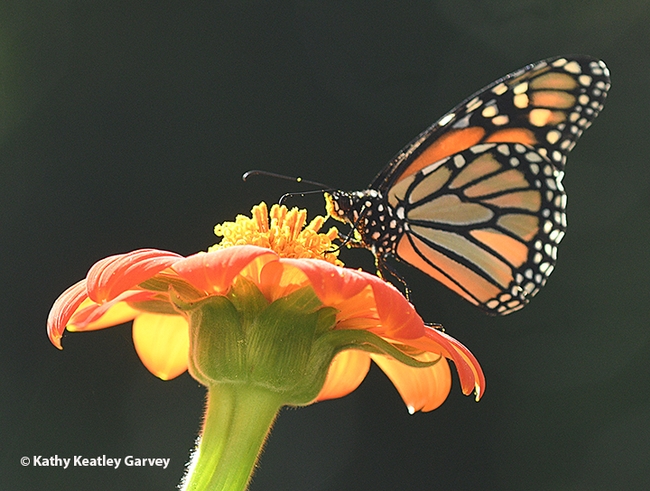
Bees are the most well known pollinators, but butterflies, including monarchs, are pollinators, too. This monarch butterfly, sipping nectar in a Vacaville garden, came up with a head full of pollen. (Photo by Kathy Keatley Garvey)
How a 'Bear' Can Outsmart a Fox
There's a way for a bear to outsmart a fox. A teddy bear bee, that is. We just witnessed a male Valley carpenter bee,...
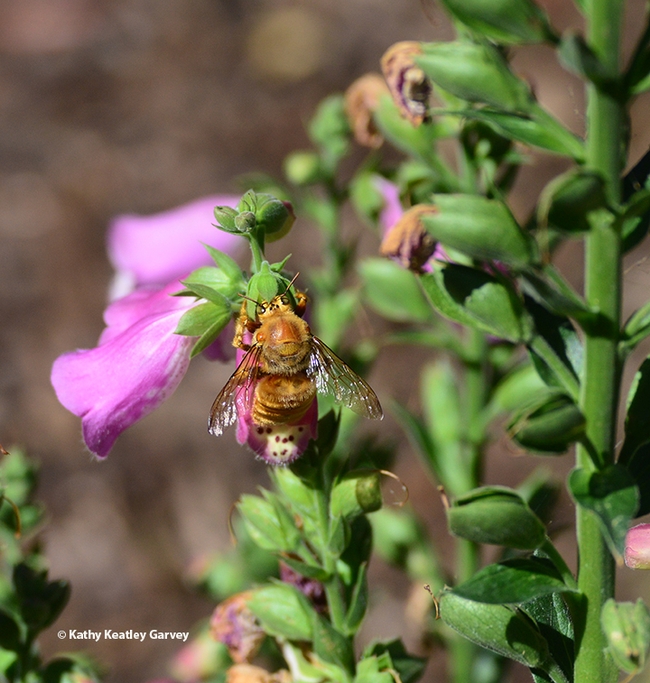
A male valley carpenter bee, Xylocopa sonorina, engaging in nectar robbing; he's sipping nectar through a hole in the base of a foxglove blossom. (Photo by Kathy Keatley Garvey)
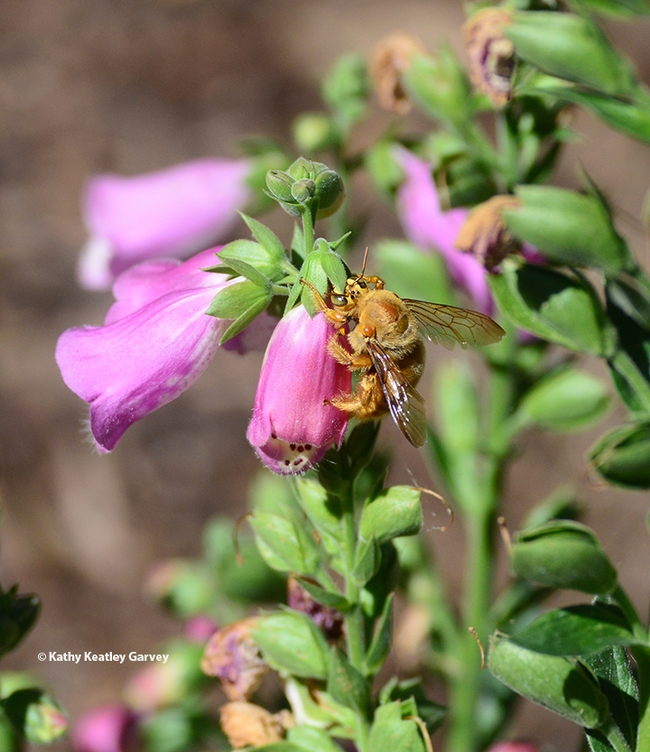
Ah, sweet nectar. This male Valley carpenter bee lingers a bit to sip the sweet reward. (Photo by Kathy Keatley Garvey)

Close-up of male Valley carpenter bee, "the teddy bear beer," engaged in nectar robbing. (Photo by Kathy Keatley Garvey)
Davis Botanical Society Grant Winners: 'How I Spent My Field Season'
You've heard of New York Times' best-selling author, Mark Teague, and his book, "How I Spent My Summer Vacation" (Dragonfly Books),...
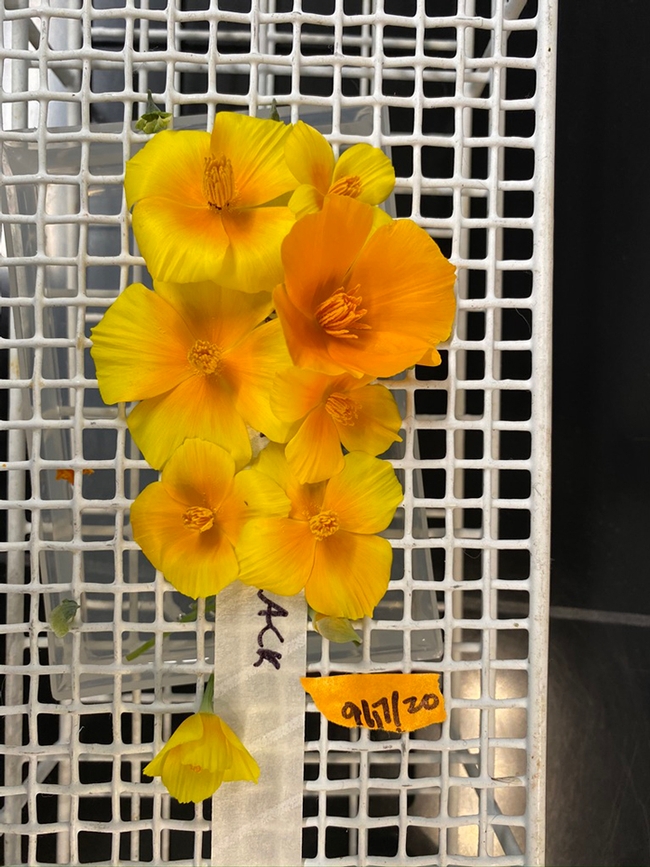
Doctoral student Shawn Christensen will present "Nectar Microbes Induce Pollen Germination to Access Scarce Nutrients" at the Davis Botanical Society meeting on Nov. 19. (Photo by Shawn Christensen)
So Bee It...
The honey bees love it. So do the long-horned bees, bumble bees, carpenter bees, European paper wasps, syrphid flies, butterflies, blister...
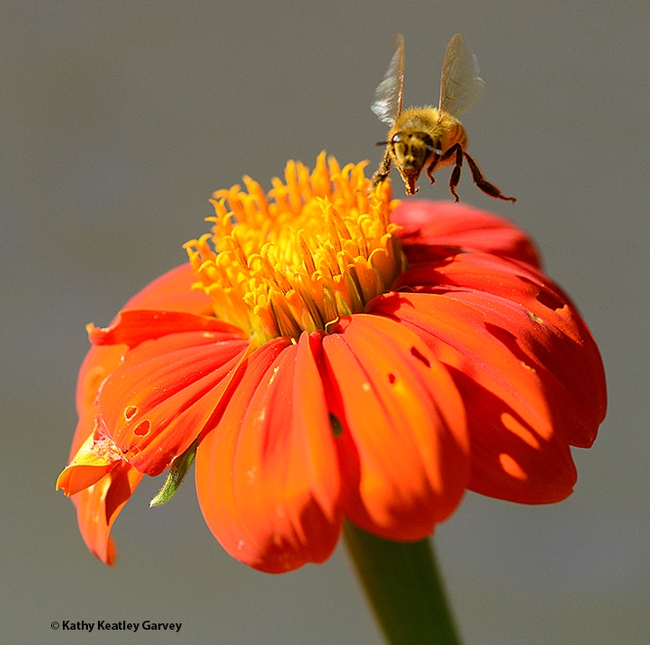
A honey bee heads toward a Mexican sunflower, Tithonia rotundifolia, in Vacaville, Calif. (Photo by Kathy Keatley Garvey)
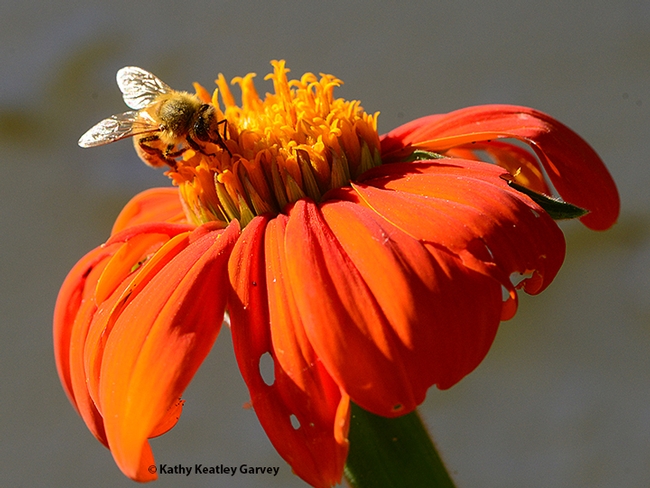
Ah, this Mexican sunflower is all mine. (Photo by Kathy Keatley Garvey)
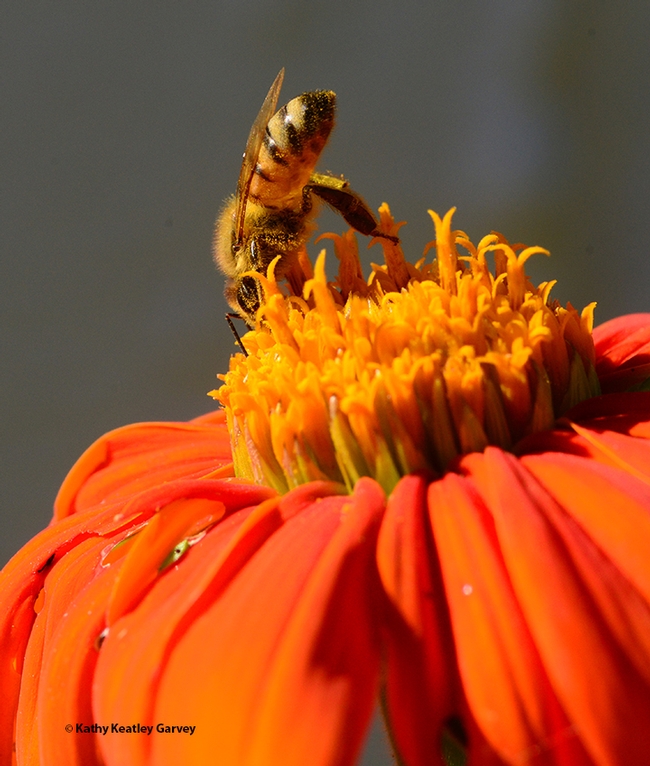
It pays to keep a lookout while you're foraging on the ever-popular Mexican sunflower, genus Tithonia. (Photo by Kathy Keatley Garvey)
Honey Bees Just Lovin' the Mustard
The things we overlook are the things we should look for. Take mustard and honey bees. You've seen mustard thriving in fields, but have you ever...
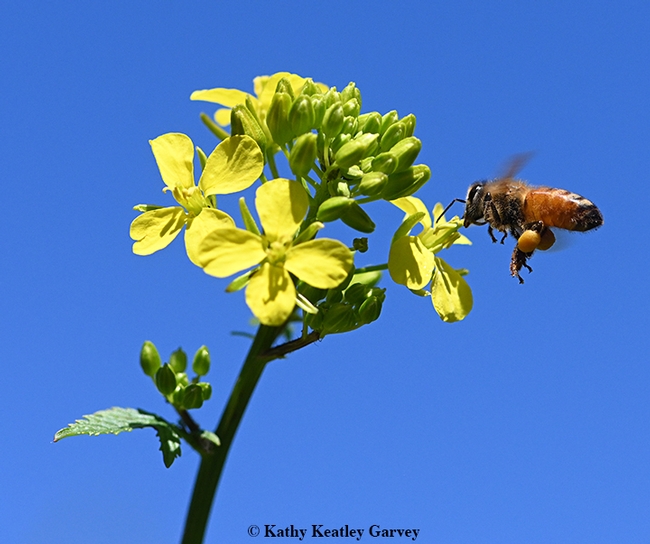
Packing a heavy load of pollen, a honey bee heads for a mustard blossom. (Photo by Kathy Keatley Garvey)
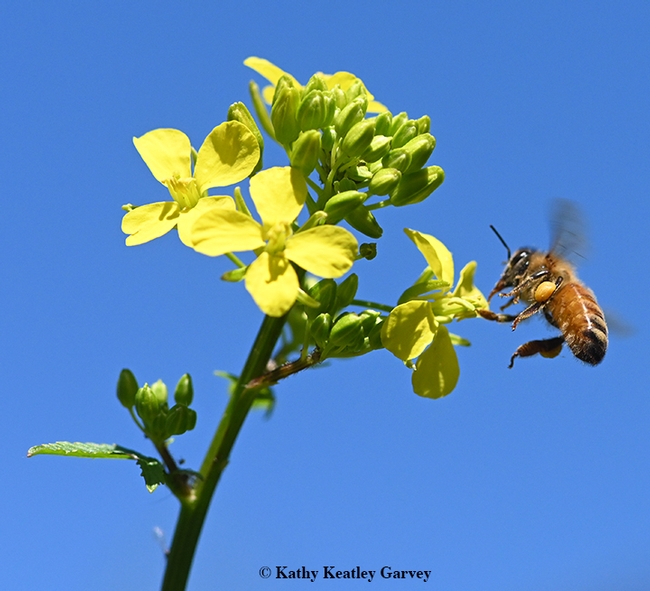
Touchdown! A honey bee reaches a mustard blossom. (Photo by Kathy Keatley Garvey)
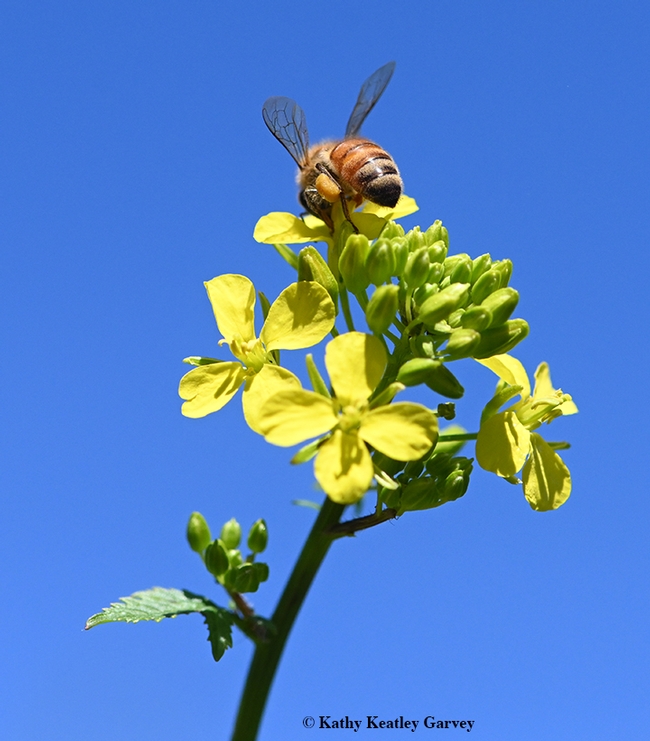
A honey bee on top of her world--a mustard blossom. (Photo by Kathy Keatley Garvey)
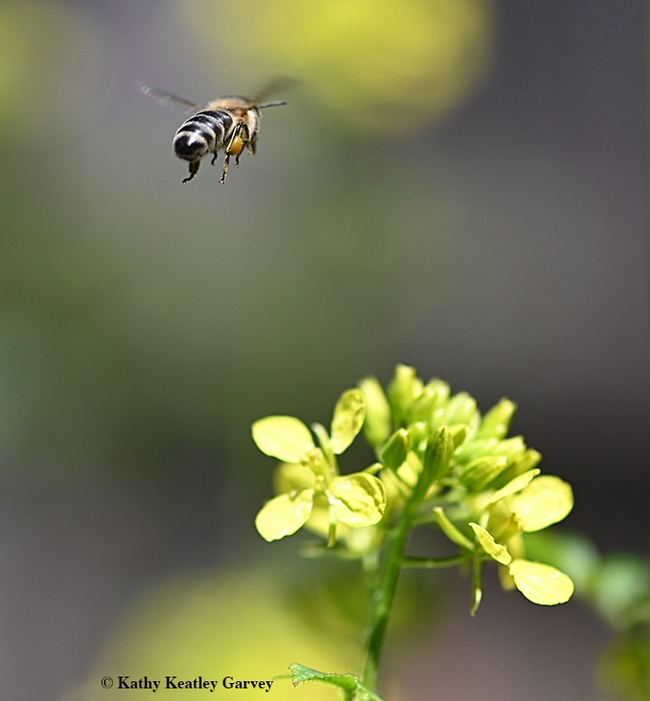
Heading home--a honey bee leaves a mustard patch to share her bounty with her colony. (Photo by Kathy Keatley Garvey)

